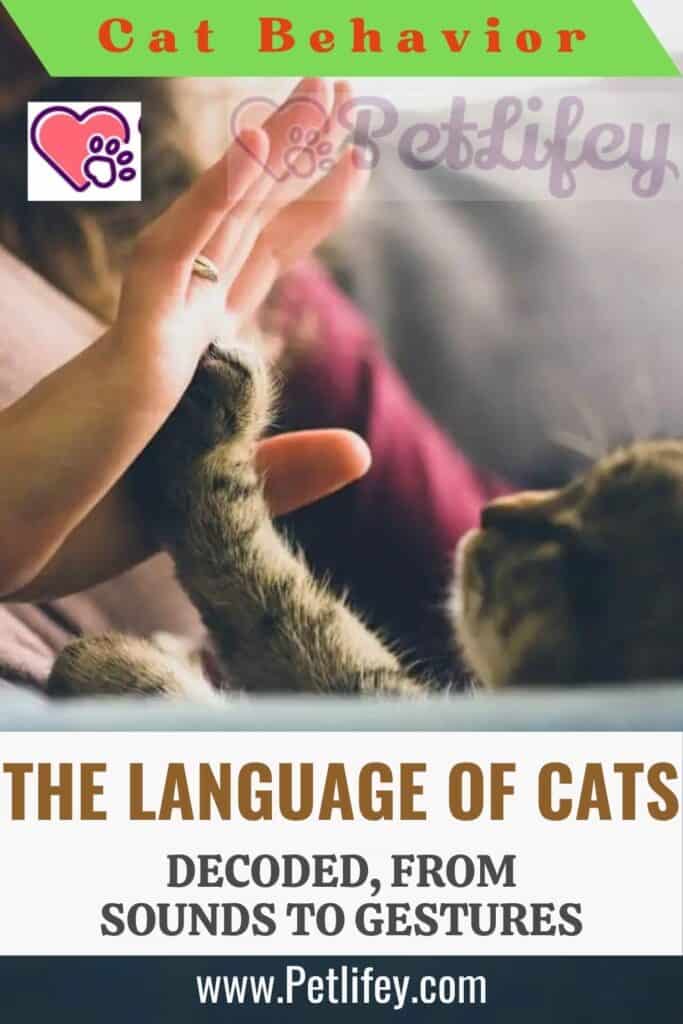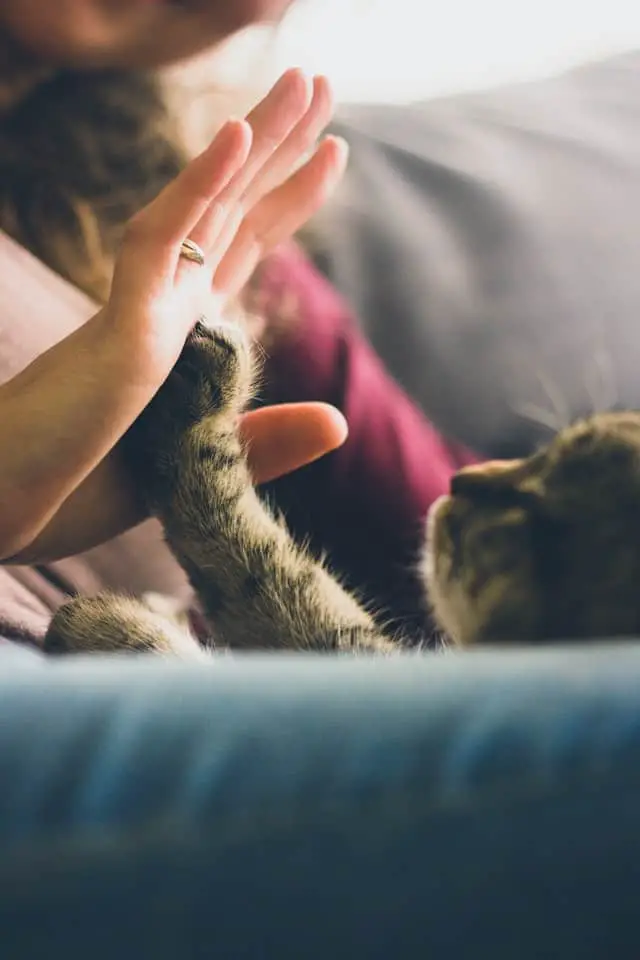
Cats speak their language not only using sounds, but also gestures and smells that humans don’t understand very well. Sometimes they purr, sometimes they clap their nails on the furniture. But what does the language of cats mean?
When our cat walks marching, holding its tail upright, and approaches you with the tip of its curved tail as it rubs against your legs, that’s a good sign, according to experts. It means the cat is feeling friendly, wants to be with you, and is flattering you with attention. Rubbing his head against us, the cat tells us that he accepts us as his property.
Smells, gestures and sounds: the feline language
Cats have glands behind their ears that release odors when they want to mark their territory, and they like to do this every time their owner comes home. But unfortunately the message completely loses in translation, because humans do not perceive the smell.
Experts also advise us to stand up and talk to your cat, rather than approaching him without speaking. This again is a behavior, in the language of cats, less threatening for them when the owner approaches him.
If the cat approaches us, then we can give him a cuddle. Another common scenario is when the cat is lying on its back or on its side, perhaps with its eyes closed or with only one eye open, while grooming. This means that the cat feels happy and relaxed. Cats also take little breaks while grooming when there is something new to discover. And in those moments they allow us to caress them.
Difficult characters
While there are many cats that love cuddles, there are obviously scenarios where it is best to approach the cat carefully. Those who want to caress and touch the cat should always approach carefully. If the animal sits down, it is best to take a break and talk to the cat so that he does not feel threatened.
Not all cats like to be stroked on the stomach. And if the cat sits on our laptop or in the newspaper it means in the language of cats: “I’m bored, keep me busy with something to do” .
And what does it mean when the tip of the cat’s tail wags back and forth, while the rest of the body remains stationary, with the back arched? It means that the cat is feeling fearful or aggressive, and wants to be at peace or quiet. Experts advises to be extremely careful in this case. Cats express their restless mood by waving their tails, which can certainly confuse dog lovers.
Aggression and misunderstandings
If the cat’s aggression is directed towards a certain object, then this must be removed. Otherwise, it’s a good idea to wait for the pet’s ears to return to their normal position.
On the other hand, when a cat scratches a piece of furniture, it is telling us that that spot in the house now belongs to him / her. For these cases, he suggests we be firm with our cat – even if it is certainly not easy – and prevent him from scratching the furniture from an early age, offering alternatives. The cat, in fact, wants to sharpen its nails and discharge excess energy on a place to be scratched.
If your cat pees outside the litter box, this can mean many things, from kidney problems that make it painful to urinate, to the flu. But it could also be a psychological problem, as cats are very sensitive. Maybe he is simply protesting about something that we have changed, and that it does not suit him, even a small detail like a bowl of a different color. In case of psychological or physiological problems, we always contact the veterinarian.
The sounds and verses of feline language

In addition to expressing themselves with various gestures and behaviors, cats also have a vast repertoire of noises. The famous “meow” sound is mostly directed at humans.
Cats, being highly intelligent, have noticed that people communicate with words, and have adapted accordingly. When the cat uses a high-pitched meow, it usually feels faint and wants attention. Meows turn into grunts when the cat wants something urgent, like food or a toy.
A long, deep growl indicates that the cat is feeling aggressive or defensive. The cat is thus telling us not to approach. A deep and short growl, on the other hand, means “thank you!” or “good!”.
Purring has all sorts of meanings in the language of cats. They can indicate contentment, hunger, fear, pain. To interpret the cat’s purr, the circumstances must always be considered. For example, if the purr happens while she’s on your lap, I’m purring with contentment. But if they are done during a visit to the vet, they are probably anxious.
Anyone who really wants to understand what the cat is telling us needs to focus on the quality of the noises they make. For example, a calm and gentle sound indicates that the cat does not intend to harm us.
case, the best way to learn to understand our furry friend is to listen patiently, and take note of the changes in his behavior.






